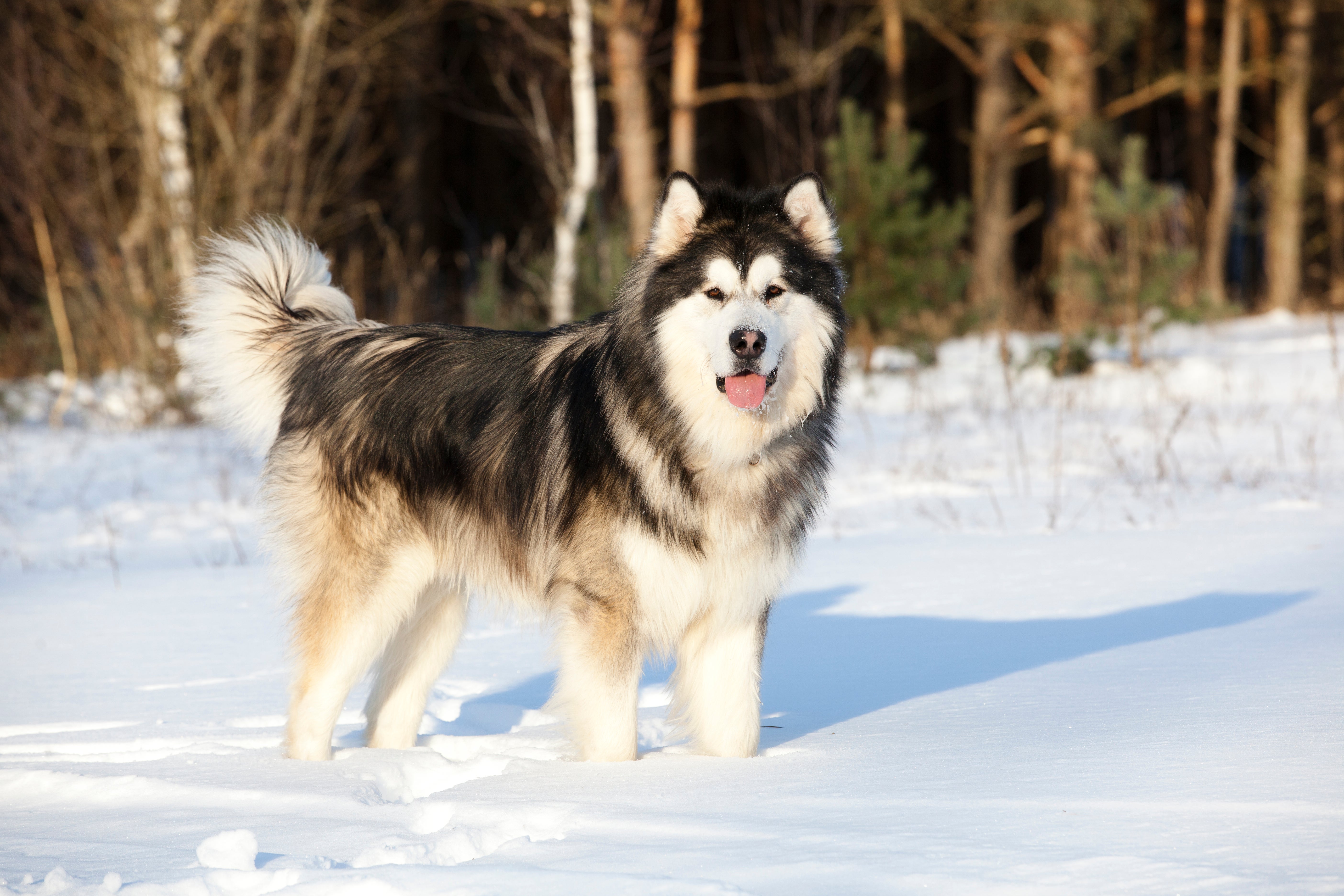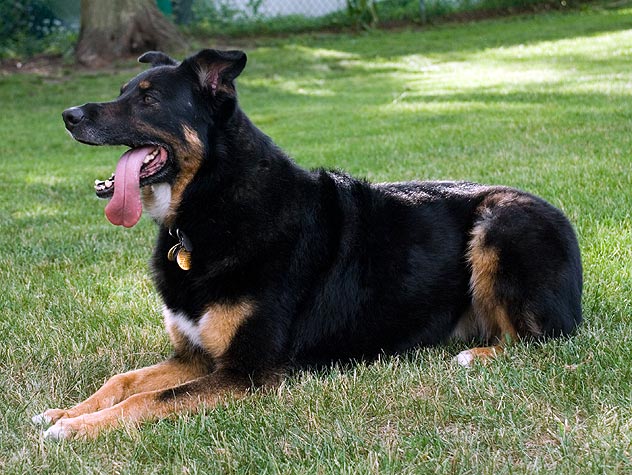Alaskan Malamute
The Alaskan Malamute is a large, Spitz-like breed. They have tails curled over the backs, very thick coats, erect ears, and a wedge-shaped head. Loyal and friendly yet also powerful and bursting with endurance, this dog was originally bred to haul sleds across long distances.
Breed characteristics carousel
Learn More
Need to Know
- Dogs suitable for experienced owners
- Need to be aware of potential health issues
- Enjoys vigorous walks
- Large dog
- Some drool
- Requires regular grooming
- Barks and alerts to visitors/anything unusual
- Could have issues with unknown dogs but gets along with known dogs
- May need additional training to live with other pets
- Great family dog
- Can live without a yard
- Can happily live in the city
- Cannot be left alone
- AKC Registered Breed

Personality
These powerful pups are playful goofballs with a stubborn streak. They love their families but skip their daily walk and they might unleash their inner howling instinct in protest. Friendly with familiar faces, Malamutes might need a proper introduction to new furry friends to avoid a bossy attitude. They can be cuddly comedians, despite their imposing stature.
Like most of the dogs of the Spitz family, the Alaskan Malamute evolved in the Arctic regions, shaped by adverse climatic conditions. The breed’s origin is unknown but was first described as living among the native Inuit people known as the Mahlemuts, who lived along Norton Sound on Alaska’s northwest coast. The word Mahlemut comes from “Mahle,” an Inuit tribe name, and “mut,” meaning village.
The dogs hauled the heavy loads back home. Large and strong rather than fast, Malamutes could do the work of many smaller dogs in one powerful body. They were treated almost as one of the family, although they were never pampered as pets. When the first outside explorers came to the region in the 1700s, they were impressed by the hardy dogs and by their owners’ attachment to them.
With the discovery of gold in 1896, a flood of outsiders came to Alaska. For entertainment, they staged weight-pulling contests and races among their dogs. The native breeds were interbred with each other and those brought by settlers, often in an attempt to create a faster racer or simply supply the vast numbers of dogs needed to supply the gold rush.
As the breed’s reputation grew, a lucky few were chosen to help Admiral Byrd in his 1933 trek to the South Pole. During World War II, the Malamute was again called into service as freight haulers, pack animals, and search-and-rescue dogs.
If you are active and OK with a strong-willed dog, then the Alaskan Malamute is a good fit. An owner will need to have some experience with large dogs and will have ample time to dedicate to training and exercise. This breed thrives in homes with plenty of space and access to outdoor activities, making them a great fit for people who enjoy hiking, running, and other outdoor adventures.
An ideal owner should be committed to consistent training and socialization, as well as providing mental and physical stimulation to keep the Malamute happy and well-behaved. Additionally, they should be prepared for regular grooming and maintenance.
The Malamute needs time devoted to active running daily, especially in colder temperatures. Otherwise, they are generally quiet and content to relax in family life. They might even howl or “sing” just for fun.
A big house and well-fenced yard are important for an Alaskan Malamute. They should have plenty of access to the outdoors for runs and romps. They are not city dogs as they enjoy howling—something your neighbors might not appreciate in close quarters.
The Alaskan Malamute has a thick undercoat with a thicker, more coarse coat on top to protect them against severe, harsh weather in the Arctic. They will shed a lot, so get your vacuum ready. Daily brushing can help capture loose hair, but you shouldn’t expect a spotless house if you are the proud owner of one of these powerful dogs.
They’ll need to learn manners as they are a large dog that could easily knock things over. Alaskan Malamutes have deep pulling instincts and will need to learn to walk on a leash or harness, although most of the time they’ll want their exercise to come from free running, not traditional dog walks. They thrive in dog sports which will help them exercise their hard-wired behaviors. Socialization is important, as is recall. Recall should be practiced, but don’t be surprised if their learnings go straight out the door if something catches their eye outside.
Alaskan Malamutes can be suitable for family life, especially with older children. They are friendly, affectionate, and loyal, thriving on companionship. However, they require significant exercise, mental stimulation, and regular grooming, making them best suited for active families with the time to meet their needs. Early training and socialization are essential to ensure they are well-behaved and can safely interact with children and other pets.
The cost of an Alaskan Malamute from a breeder is significantly more than the cost of adopting one from a local shelter or rescue. The adoption fee usually covers additional items such as spaying or neutering, vaccines, and microchipping.

Learn more about feeding and caring for your Alaskan Malamute on Purina.
Did You Know?
- Alaskan Malamutes were involved in The Serum Run of 1925. One hundred and fifty sled dogs transported diphtheria antitoxin across Alaska, covering 674 miles in just over 5 days. They helped save the small town of Nome from an epidemic.
- During World War I, 450 Alaskan Malamutes were sent to France to deliver supplies.
- They were used during the Gold Rush to haul things across the mountains.
- In World War II, they were used to sniff for mines, carry weapons, and act as search and rescue dogs.


